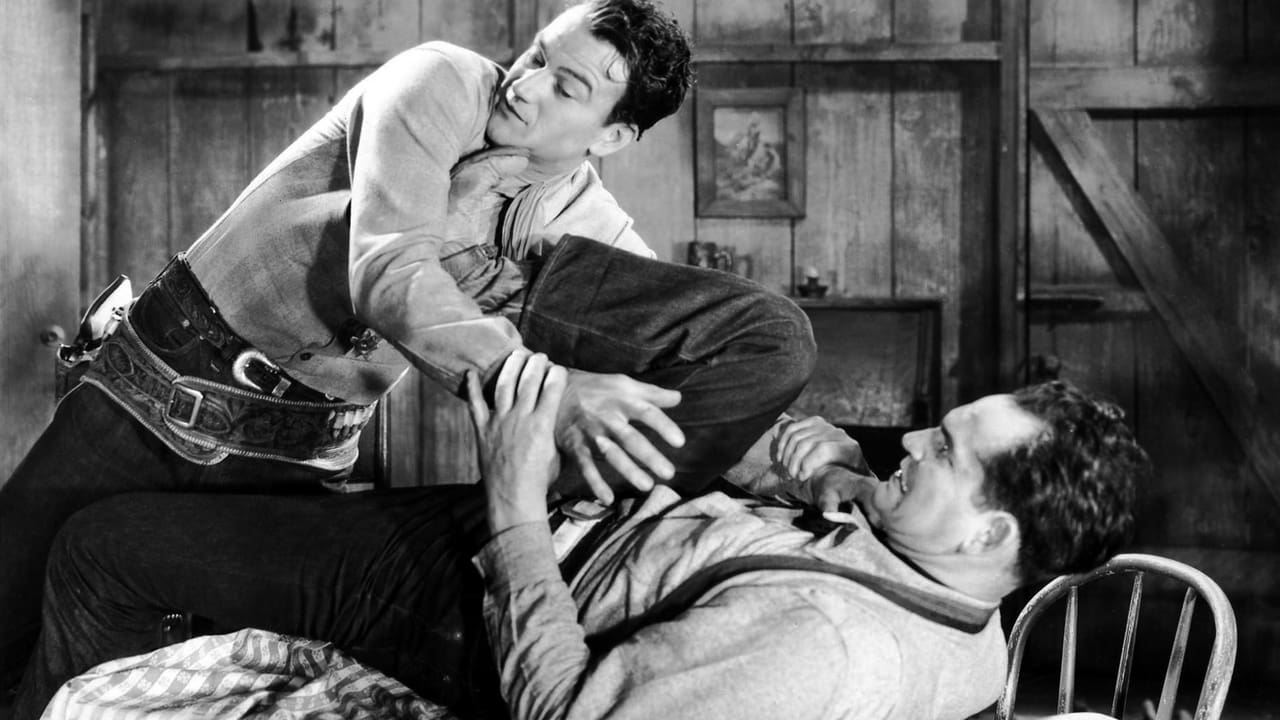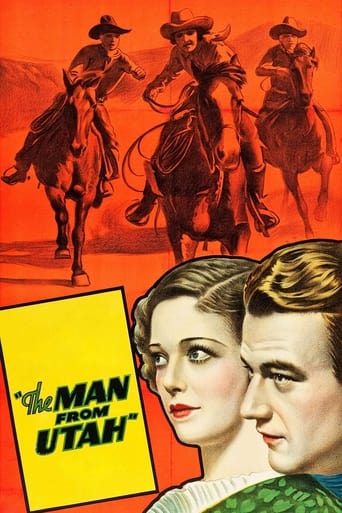

This Western sees John Wayne playing John Weston, the eponymous Man from Utah, he is down to his last dollar until he helps a martial by gunning down three bank robbers. He is offered a job; the martial needs somebody to help expose a gang that is rigging rodeo competitions. It could be a dangerous job; several competitors that aren't part of the gang have had 'accidents' including fatal 'snake bites' while riding a horse! As he heads towards the rodeo he thwarts a stage coach robbery; on board are the bank owner's daughter and a woman connected to the gang. Once in town he enters the rodeo and on the first day does very well and is the favourite to be the overall champion the gang want him to throw the event but if he doesn't take their offer of money there is still the possibility that he will get 'snake-bitten'.With a run time of under an hour this film is definitely rather short and when you consider that quite a bit of that time is taken footage of an actual rodeo there is little time for the story. The plot is decent enough and there is a good amount of action. The characters are staples of the genre with little real development; there is hardly time for any! There is no real doubt about who is good and who is bad; one bad character changes sides but even this is because the gang plans to leave her behind. The cast are solid enough certainly better than one might expect for a short low budget feature. Overall this isn't a must see unless you are a John Wayne completist but it is worth watching if you want a short western.
... View MoreThis film holds up better than some of the early westerns. John Wayne is a hero in this - all the way. His Weston character is a well drawn two fisted hero who can do it all. Of course you have to watch the film until the ending to find out who his character really is. That is what I mean about the plot being good- it keeps you guessing exactly who Wayne is until the end.The DVD I saw of this has some very dark sequences. A fight sequence is dark deliberately, but some of the other ones really should be better lit. Think this had to do with the tight shooting sequences of these films. There were times in this era when these films would be shot in the matter of just a few days.Overall, while the special effects are crude & some of the sequences a loosely tied, if your a fan of the Duke or like these old westerns, this is a pretty good film. It is not on the level of The Searchers, but it was not meant to be. This is one of many early films Wayne did to establish himself as a true cowboy hero of the silver screen.
... View MoreIn this low budget oater from Monogram we've got John Wayne helping U.S. Marshal Gabby Hayes bring down some bank robbers in the very act of same. Gabby liked the way young man handled himself so he takes him on as an undercover agent to smash a rodeo racket.You heard it folks, a rodeo racket. This bunch comes to a given town sets up a rodeo, take in bets from the locals on their best cowboys and the gang's cowboys always seem to win by hook or deadly crook. They also do a few other things on the side like bank robbery, rustling, your usual western crimes. They've also got a unique way of dispatching competition into eternity which I won't get into. The Duke was lucky to discover what they had in store for him. I will say that modern forensic science would have had the mystery solved.This was one of those films where they tried to make John Wayne a singing cowboy. The film begins with him on a white horse, strumming a guitar, singing some forgettable ballad. Some Nelson Eddy wannabe's voice is dubbed in and you know it isn't Wayne. It's so bad that even audiences in 1934 would have known this wasn't John Wayne, And this was before he became JOHN WAYNE.
... View MoreThis is pretty dire. Just as Italian opera always kicks off with the tenor blasting out an aria, this horse opera has Big John (in thickly caked make-up) miming pitifully to a recorded voice as he strums a guitar in the saddle. From that wobbly start, the film never really improves.Wayne's character is named John Weston ("western" - get it?) and when he rides into town, he gets involved in the least-convincing shootout you ever saw. Once the basic plot has been established (and believe me, it's basic) what follows is wooden acting and lumbering plot exposition. The film is downright amateurish. When the Duke takes a river trip, instead of cutting from Big John in canoe to the land-based action, the editor gives us the whole laborious process of Wayne disembarking, then clambering up through the undergrowth. The insert of the guy riding shotgun on the stagecoach is oh-so-obviously NOT on the stagecoach. And speaking of "Stagecoach", it is remarkable to note the change in Wayne in five short years. Under Ford's tutelage he grew into a star, and commands the screen in the later film with effortless authority. Here, he is a green amateur.If anything, the movie goes downhill after Weston sets off on his mission. The rodeo is merely an excuse to fill a third of the reel time with archive footage. The opening cavalcade is interminable, and we get the same stock shot of the crowd over and over again. Needless to say, Weston decides to have a go at this cow-wrasslin', and just happens to smash the calf-roping world record. Dolores the fallen woman (Anita Campillo) makes a play for Weston (there always has to be a Fallen Woman in this kind of film - often a latina, too). How come she's Mexican, when her brother isn't? Our hero snubs the judge's daughter, Marjorie (played by Polly Ann Young) in order to make off with Dolores: it is a scene of the ugliest crudity, and woefully underwritten, with Big John wordlessly walking away from the Nice Girl.When director Robert N. Bradbury tries for novel effects, he comes a cropper. The punch-up in a blacked-out room may have seemed like a good idea when the movie was being planned in some Pasadena gin joint, but it fails miserably on the screen. It lasts too long and is too irritating for the viewer. In a medium which relies almost exclusively on visuals, black-out is rarely a smart move. And how did Big John get his white hat on in the dark? Composed of tedious medium two-shots, eschewing close-up altogether, the picture lacks cutting rhythm. If Weston and the Marshall are trying so hard not to reveal their alliance, why are they sharing a hotel room? Why does the gang suddenly decide to snub Dolores? Why did Gabby Hayes get the part of the old-timer? Wasn't Walter Brennan in town? Why is the incidental music so strange? How does Big John know that the bad guys are hiding a needle in the saddle, dipped in snake venom? What kind of idiots would try to commit a series of murders by hiding needles dipped in snake venom in cowboys' saddles? Enough already.
... View More